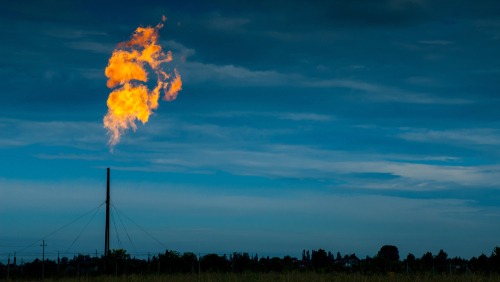EPA issues new rule to reduce methane emissions

The U.S. Environmental Protection Agency (EPA) introduced a plan to reduce methane emissions as part of an effort to limit air pollutants from oil and gas operations.
The EPA said that one-third of the warming from greenhouse gases comes from methane emissions, which traps about 30 times as much heat as carbon dioxide over 100 years. Sharp cuts in methane over the next decade will have a beneficial impact on the climate. The proposed new Clean Air Act rule is in response to President Joe Biden’s executive order on Protecting Public Health and the Environment and Restoring Science to Tackle the Climate Crisis.
“As global leaders convene at this pivotal moment in Glasgow for COP26, it is now abundantly clear that America is back and leading by example in confronting the climate crisis with bold ambition,” EPA Administrator Michael Regan said. “With this historic action, EPA is addressing existing sources from the oil and natural gas industry nationwide, in addition to updating rules for new sources, to ensure robust and lasting cuts in pollution across the country. By building on existing technologies and encouraging innovative new solutions, we are committed to a durable final rule that is anchored in science and the law, that protects communities living near oil and natural gas facilities, and that advances our nation’s climate goals under the Paris Agreement.”
The oil and natural gas industry is the largest industrial source of methane emissions in the U.S., emitting more methane than the total emissions of all greenhouse gases from 164 countries combined. Oil and natural gas operations also emit smog-forming volatile organic compounds (VOCs) and air pollutants such as benzene that harm public health.
The proposed rule would reduce 41 million tons of methane emissions from 2023 to 2035, the equivalent of 920 million metric tons of carbon dioxide. That is more than the amount of carbon dioxide emitted from all U.S. passenger cars and commercial aircraft in 2019. In 2030 alone, the rule would reduce methane emissions by 74 percent compared to 2005.
The EPA estimated that the net climate benefits from the proposed rule would amount to $48 to $49 billion from 2023 to 2035. Further, the impact on gas and oil prices from 2023 to 2035 would be small – pennies per barrel of oil or thousand cubic feet of gas.
Specifically, the rule includes a monitoring program for new and existing well sites and compressor stations; a compliance option that allows owners and operators the flexibility to use advanced technology that can find major leaks more rapidly and at lower cost; a zero-emissions standard for new and existing pneumatic controllers; standards to eliminate venting of associated gas, and require capture and sale of gas where a sales line is available; performance standards for other new and existing sources, including storage tanks, pneumatic pumps, and compressors; and a requirement that states engage with overburdened and underserved communities in developing their plans.
EPA will take comment on the proposed rule for 60 days after it is published in the Federal Register. It is also seeking comment on additional sources of methane to further strengthen emission controls and increase reductions from oil and gas operations. EPA intends to issue the supplemental proposal in 2022, and a final rule before the end of 2022.
The Edison Electric Institute (EEI) applauded the move.
“We are working to get the energy we provide as clean as we can as fast as we can while maintaining the reliability and affordability that our customers value. Natural gas plays a vital role in accelerating the deployment of renewables by acting as a flexible complement to variable sources like solar and wind. Federal regulations on methane emissions across the value chain are essential to ensuring the continued use of natural gas as a 24/7 on-demand energy source,” EEI President Tom Kuhn said. “We look forward to working with Administrator Regan and his team as they gather feedback and develop final regulations for methane emissions.”
